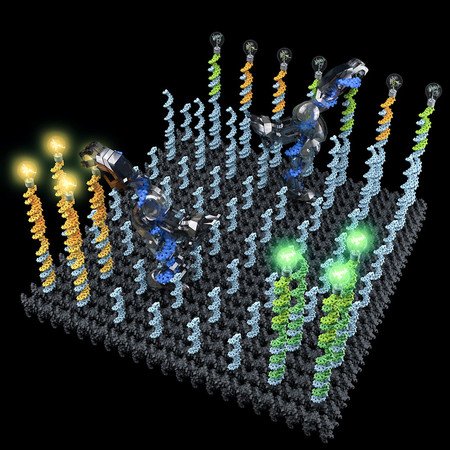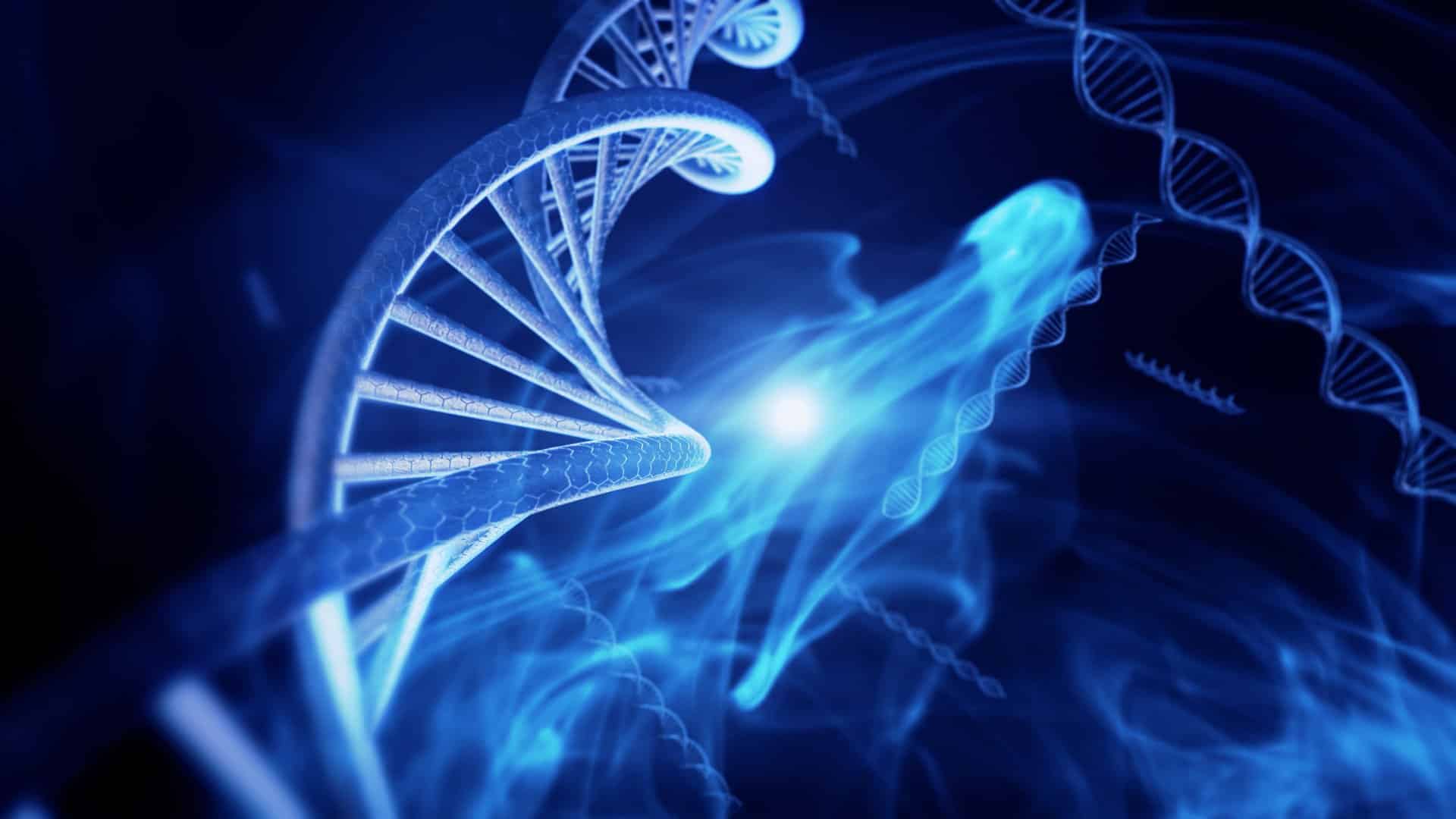DNA Nanorobot That Picks, Sorts And Drops Off Molecular Cargo
Robots are changing our lives now in so many ways and they have been for years. From the first time you saw a toaster pop up by itself, we’ve casually accepted that machines can be trusted to do things for us. They record our shows, cook our food, and even run our cars. We just don’t see it because these “robots” don’t have a face we can talk or a butt we can kick.
Technically robots are automatic motorised tools, but they’re generally depicted as clunky humanoid foils that the pop culture has bumbled about for almost a century now. Now, following suit are CalTech researchers who have built a nanobot made of 53 nucleotides — the basic structural units of DNA — that has different body parts: a hand and an arm for

grabbing cargo; a foot, a leg and another foot for walking. (Because of the shape of its body, “walking” looks more like crawling around like a drunken inchworm
; the little bot does this on a tiny flat surface roughly 60 by 60 nanometers in area that is also built out of DNA.)Imagine this- a bot walking across a precisely folded DNA landscape, a teeny tiny robot picks up a molecular payload, drops it off at a defined delivery address, then heads off to retrieve and sort more molecules. A sure shot winner if inserted as the opening scene of a sci-fi movie.
And this is exactly the team has achieved. The three-part DNA bot has a “leg” with a pair of feet, an “arm” with a “hand” that allows it to carry cargo, and a third component was added to tell the hand when a specific drop-off point had been reached so it would know to release the cargo.
“Just like electromechanical robots are sent off to faraway places, like Mars, we would like to send molecular robots to minuscule places where humans can’t go, such as the bloodstream,” Lulu Qian, a bioengineering professor at the California Institute of Technology and one of the study’s authors, explained in a press release. “Our goal was to design and build a molecular robot that could perform a sophisticated nanomechanical task: cargo sorting.”
In the course of the experiment, researchers placed the cargo onto a random location along the surface of a two-dimensional origami (self-folding) DNA test platform. The walking DNA robots moved in parallel along this surface, hunting for their cargo.
To see if a robot successfully picked up and dropped off the right cargo at the right location, the researchers used two fluorescent dyes to distinguish the molecules. Scientists are not at the stage yet where they can program robots of this size to have built-in memory, so instead, the robots were designed to “match” their cargo.
“We designed specific drop‐off locations for each type of cargo: if the type matches, the drop‐off location will signal the robot to release the cargo; otherwise the robot will continue to walk around and search for another drop‐off location,” explained Qian. “You might think that the robot is not smart. But here is a key principle for building molecular machines: make individual molecules as simple as possible so they could function reliably in a complex biochemical environment, but take advantage of what a collection of molecules can do, where the smarts are distributed into different molecules.”
The researchers estimate that each DNA robot took around 300 steps to complete its task, or roughly ten times more than in previous efforts. In experiments, 80 percent of cargo molecules were sorted, so there’s room for improvement. All this hopping might sound quick, but a single step between stones takes a rather lengthy 5 minutes, meaning that covering the entire surface takes a whole day. Qian and her colleagues say they could boost the speed by adding an enzyme to give extra thrust, or giving the robot a chemical motor.
“Though we demonstrated a robot for this specific task, the same system design can be generalized to work with dozens of types of cargos at any arbitrary initial location on the surface,” says former graduate student working on the project, Anupama Thubagere. “One could also have multiple robots performing diverse sorting tasks in parallel.”
Though Qian noted in the press release that she and her team didn’t create the robots with any specific purpose in mind, she thinks other researchers will find applications for them.
“It is my hope that other researchers could use these principles for exciting applications, such as using a DNA robot for synthesizing a therapeutic chemical from its constituent parts in an artificial molecular factory, delivering a drug only when a specific signal is given in bloodstreams or cells, or sorting molecular components in trash for recycling,” said Qian.



























